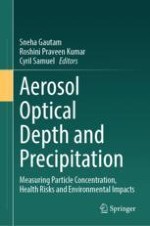2024 | OriginalPaper | Buchkapitel
Source and Risk Assessment of Polychlorinated Biphenyls (PCBs) in Ambient Air and Its Human Health Implications
verfasst von : Thamaraikannan Mohankumar, Jawahar Salavath, Panjakumar Karunamoorthy, Dhananjayan Venugopal, Jayanthi Palaniyappan, Elango Duraisamy, Ravichandran Beerappa
Erschienen in: Aerosol Optical Depth and Precipitation
Verlag: Springer Nature Switzerland
Aktivieren Sie unsere intelligente Suche, um passende Fachinhalte oder Patente zu finden.
Wählen Sie Textabschnitte aus um mit Künstlicher Intelligenz passenden Patente zu finden. powered by
Markieren Sie Textabschnitte, um KI-gestützt weitere passende Inhalte zu finden. powered by
